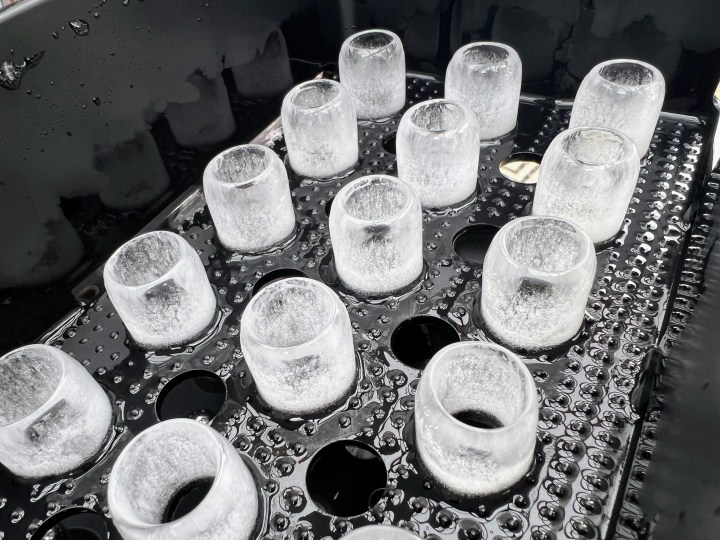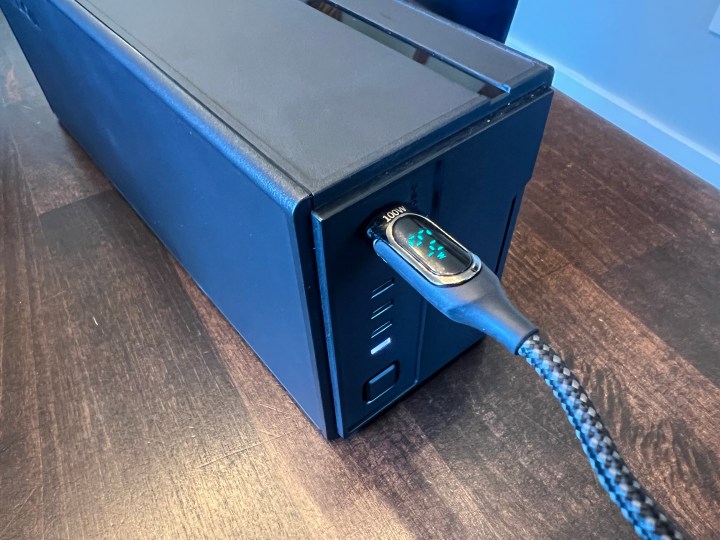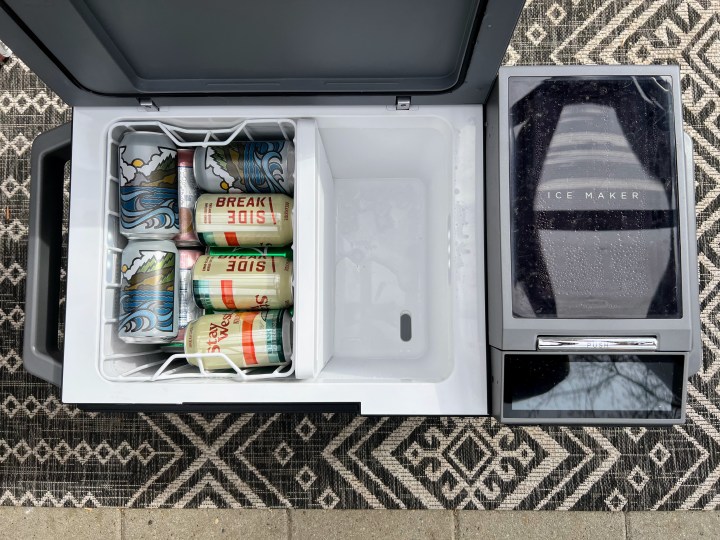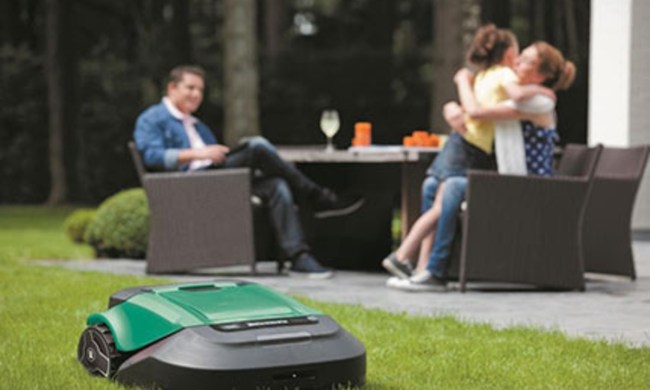Every cooler operates on borrowed time. It leaves for your camping trip brimming over with crisp produce and ice-encrusted beer that looks straight out of a Super Bowl commercial, and returns with a soggy block of foil-wrapped cheddar cheese floating in a pool of mustard water. Mother Nature always wins.
Perhaps that’s why I was so enamored when I saw the EcoFlow Glacier at CES 2023. Less a cooler than a mobile battery-powered fridge on wheels, the sleek electric Glacier not only obviated the need for ice, it would make ice for me in 18 minutes. My home fridge can’t even do that, and I didn’t even know I wanted it to until just now. When EcoFlow offered to let me try the Glacier, I envisioned sipping a perspiring glass of whiskey in the tropics and accepted the occupational hazards of my job.

The promise
Having lugged an actual minifridge on a camping trip last year, I’m acutely aware of how inefficient they can be – the fridge in question barely lasted a weekend attached to an absolutely massive battery. OK fine, the blending, boiling, and microwaving I did may have also had something to do with that. But the Glacier is rated to use just 300 watt-hours of electricity for 24 hours of cooling. That’s an amount you could realistically pull down with solar panels while you’re camping, which elevates the Glacier from an “iceless cooler” to a true off-grid fridge, a genuine mobile appliance prepared to keep your food and drink cold indefinitely with enough sweet, sweet sunlight.
Unswaddled from its foam-and-cardboard cocoon, the Glacier looks more like an appliance for shuttling organs by drone in the year 2067 than a cooler, which is to say, it’s futuristic. And glossy in parts. Even outdoors, my dog’s hair started working its way into every crevice immediately. The Glacier will doubtless need a bit more preening than a bear-proof Yeti, but that comes with the territory. It’s still sturdy enough to sit and stand on, though the top-mounted LCD will compel you to watch your step.
Inside, two different compartments can be set to temperatures as low as -4 degrees Fahrenheit. That means you can not only make ice, you can store it. And ice cream, and popsicles, and whatever other frozen delights you might desire beside a fire.

The icemaker is so simple, it’s ingenious. It’s a tiny water bath stippled with little metal nubs that protrude through the bottom of a basket. When you make ice, the nubs chill rapidly, forming thimbles of ice around them. Eighteen minutes later, you lift a basket full of tiny ice cubes from the water bath. Brilliant. It’s also a power-intensive parlor trick that costs about 10% of battery life, so while you might make enough ice to toss in a glass of Glenlivet, you won’t be playing ice machine for the campground.
Power comes from a 300Wh brick that slides into the back of the Glacier, which is convenient for two reasons. One, you can pull it out and use the single USB-C port to power other gadgets like your phone or laptop. Two, you can pull it out and charge it without moving the cooler. Since a fully loaded cooler can push 40 pounds, that’s no small convenience.

The Glacier includes both wheels and a telescoping handle to make it rollable rather than strictly luggable. The wheels can quickly detach with four thumb screws, which could save the day in tight packing situations.
The test
Since late-season snow is putting a damper on early-season camping in the Pacific Northwest where I live, I didn’t get to wheel the Glacier into the woods as intended, but I did run a simulation in my backyard, for science: How long could I keep a cooler full of beer cold using only the sun and a 200-watt panel?
While the finicky spring weather here in Portland was an obvious handicap for the solar panels, I figured the cooler weather might offset it. After loading one side of the Glacier with beer and one with ice, I parked the cooler outside, connected a south-facing 200-watt solar array, and started the timer.

Day one brought only intermittent sun and temps in the mid 50’s, but by the end it was sitting pretty at 99%. By the end of day two, which was much sunnier, it had dipped as low as 68%, and worked its way back up to 100%. After six cloudy days in the mid 50s, with the Glacier sitting pretty at 99%, I had to concede: This thing is legit. With smart placement in the shade and a decent solar array, you could realistically keep food cold indefinitely.
EcoFlow hasn’t yet announced pricing, but if the competing $1,000 Furrion eRove is any indicator, it will come at a premium. And that’s OK. Occasional campers should probably grab a couple bags of $2.99 Reddy Ice at Safeway and call it a day. But if you’re going on an extended off-the-grid trip, staying long-term at a property without power, or maybe even boondocking long term in an RV, the Glacier is one of very few cooling devices that packs its own power. And if you need to make ice away from the wall, it’s in a class of its own. Just save some budget for the beer.


